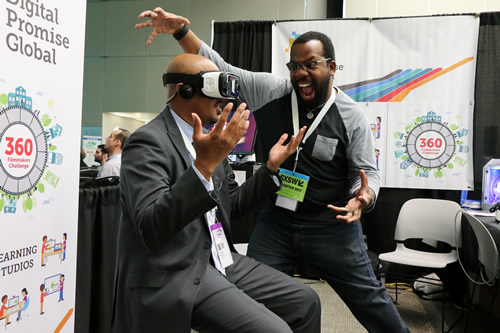To be a young adult in 2018 means to have gone through school during a very revolutionary time, technologically speaking. Throughout the 2000s, classrooms in America saw everything from basic overhead projectors and boomboxes to state-of-the-art computer labs and virtual reality headsets. The implementation of technology in schools alters the fundamental teaching structure in ways that can render significant improvements in productivity. We should be careful to not allow these new methods to overpower traditional teaching techniques, but rather find ways to use technology to enhance the world of education, given its ability to stimulate the developing brain in ways that traditional education cannot.
Only a few decades ago, education consisted solely of a flock of diverse students being taught one singular way, by one teacher, in one room, on one platform. Until lately, there was not much opportunity to customize learning for different types of students, who possess different learning styles. The use of technology in classrooms over the years has increasingly provided more and more opportunities for each type of student to learn at the pace they require to reach their fullest potential. For example, many schools now offer curriculums entirely online to be completed in the students’ own time, allowing each of them to progress at their own pace. This can help them achieve a more well-rounded understanding of the material by being able to spend more time on subjects they struggle with, and less time on topics they may already know enough about.
With current cell phones possessing more computing power than NASA in 1969, it’s no surprise that technology has made access to learning much easier. The internet alone yields vast amounts of information—although one must still be able to sift through fact from fiction. Sites like JSTOR.org and other digital libraries full of academic journals, books, and primary sources make hunting down valuable content a breeze. In addition, finding ways to incorporate social media into the classroom can help bring a “real world” feel to teaching lessons. Whether it be forming a class Facebook group, using Pinterest to brainstorm ideas, requiring students to blog, or creating a class hashtag on Twitter, students will thrive off of this familiarity and if anything, it will help convert social media into a tool rather than a distraction.
(Next page: How technology has changed the education landscape)
Research has proven that there is no “one size fits all” method when it comes to effective teaching and learning. Without the help of technology, it would be nearly impossible for one teacher to cater to multiple styles of learning. Technology affords both parties the opportunity to absorb information in the way that works best for the individual by bringing a variety of teaching styles and methods to learners, especially in a visual way. This can be accomplished by teachers in all types of communities, regardless of whether or not they have access to the latest digital-learning tools. Students can use their cell phones, if permitted, to enable mass communication with their teachers and fellow classmates on assignments, notes, and any other helpful information. Something as simple as constructing a class webpage to house announcements and downloadable materials can also provide a centralized hub for students to stay up-to-date on their studies. Finally, another tool that continues to become more widespread among professors and pupils is the use of podcasts to reinforce the information being taught. All of these methods are allowing students and teachers to achieve a higher understanding of both traditional textbook information and the ever-changing world around them.
Through all this tech-talk and innovative language, it is inevitable that social concerns will arise as well. If the balance between screen time and real time continues to teeter to one side, how will our students fulfill the social obligations that lead them successfully into adulthood? In other words, where do we draw the line? It is equally important that we do not let our future generations’ social skills suffer in the locking grip that technology has on our society. Ironically, while technology may be connecting us online, it can consequently disconnect us from the real world and forfeit the healthy amounts of face-to-face enrichment that humans need. Classes taken entirely online may lack the thought-provoking discussions that result from the students’ collaboration and input inside a classroom. Possible solutions to this problem may include Skype-esque teaching environments and online discussion tools to aid in fulfilling the participation portion of a course.
Every year that spawns new creations and discoveries in innovative technology will yield new results, and this concept is transcribed most accurately through generations of teachers and learners. Some may wonder about possible consequences that could arise from using the newest technology in education, arguing that it could end up harming our children instead of propelling them toward success, while others advocate for a “full speed ahead” state of mind. SXSW EDU works hard to facilitate all perspectives relating to the power of technology within schools and learning spaces across the world with the help of influential leaders, mentors, and organizations.
- High school students say AI will change the workforce - April 18, 2024
- Motivating students using the Self-Determination Theory - April 17, 2024
- Michigan Virtual’s statewide workgroup releasing AI guidance for K-12 educators - April 17, 2024

